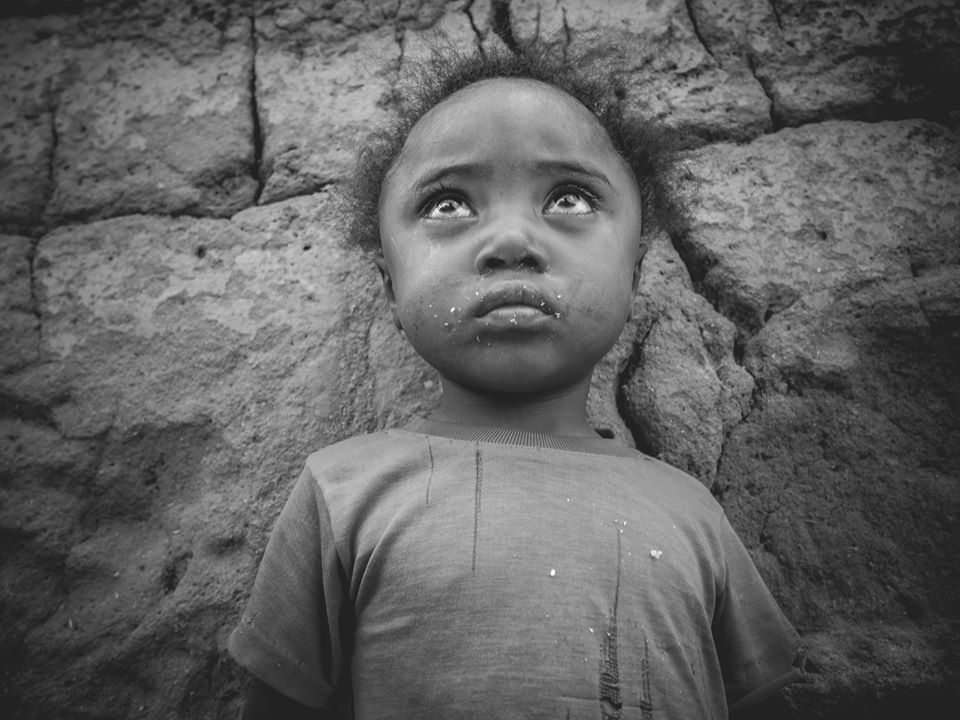Towards the International Tribunal For Environmental Disasters: from Chernobyl until the case of Norilisk
Introduction
The concept of environmental justice was explained for the very first time during the World Climate Summit, held in Rio de Janeiro in 1992[1]. In this occasion, the Convention was drawn up, underlining the importance of the principle according to which “Parties must protect the climate system for the benefit of this and future generations, on an equity basis and in relation to their common but differentiated responsibilities and respective capacities “[2].
With the World Summit on Sustainable Development held in Johannesburg in 2002[3] it had become clear the institution’s needs of an international court for environmental crimes, following the two political and environmental initiatives promoted by the International Academy of Environmental Sciences (IAES)[4], which has also promoted two major political and environmental measures. The first proposal concerned – and concerns – the establishment of the International Criminal Court of the Environment through the expansion of the International Criminal Court, inserting a new crime figure: the malicious environmental disaster, legally qualifiable as crime against humanity. The second proposal is the establishment of the European Criminal Court of the Environment.
The Environmental and Health Conference of 2013
On June 21, 2013 , the conference “Environment and Health: towards global justice” was held in Venice, a city which is a candidate to become the seat of international environmental law. Antonio Abrami, president of the Sejf Foundation (Supranational Environmental Justice Foundation)[5] and promoter of the initiative, explained how the time had come to extend the competences of the International Criminal Court (ICC)[6] based in The Hague, the Netherlands, to more serious environmental crimes, stressing on the need to create an European Criminal Court of the Environment in order to make the fight against these crimes more effective and homogeneous.
During the Conderence, the Sejf Foundation took stock of the “ecocides” in the world, presenting a dossier of the 12 major crimes against Earth and the humanity. A list that starts from the poisoning of the Indian city of Bhopal in 1984, passes through the oil spill of the BP in the Gulf of Mexico (2010), the Chernobyl disaster (1986), and reaches other environmental catastrophes that perpetuate over time, like that of the Kiribati islands and the Maldives, where the rise in the ocean due to climate change is forcing over 350,000 inhabitants to migrate. Or the exploitation of bituminous sands at the foot of the Rocky Mountains in Alberta (Canada), which contains 2 trillion barrels of dirty oil.
Nuclear disasters, sea beds destroyed by oil, explosions in factories managed in defiance of all safety. The Sejf Foundation (Supranational Environmental Justice Foundation) has censored the 12 most serious “ecocides” in history in a dossier:
- Kiribati and Maldives islands, global warming at risk [7]:the president of Kiribati is negotiating the purchase of land in the Fiji islands for the migration of 113 thousand inhabitants while the 350 thousand inhabitants of the Maldives plan to migrate to Australia
- Canada, threatened by the exploitation of bituminous sands [8]: the exploitation of bituminous sands at the foot of the Canadian Rockies is considered the most harmful industrial activity on the planet. The Alberta bituminous sands contain 2 trillion barrels of dirty oil: to bring them to light, a region as large as Florida has been destroyed. About five liters of water are used to extract a barrel of oil from these sands and the processing waste is discharged into large lakes (about 170km2) full of benzene residues, polycyclic aromatic , mercury, lead and arsenic.
- Nigeria, polluted by gas flaring [9]: the equivalent of $ 2.5 billion of gas is burned every year for the extraction and transportation of oil. Smoke from gas flaring contains substances that are very harmful to human health such as: carbon dioxide, sulfur oxides, tuolene, xylene and benzene.
- Indonesia, devastated by the world’s highest deforestation rate [10]: 1,871,000 hectares of rain forests are lost in the area every year. The rainforests of Indonesia are disappearing, cut down by unscrupulous companies that produce paper. They are one of the most important ecosystems on the planet, essential for animals such as the orangutan and the Sumatran tiger; they are home to 12% of mammals and 17% of the world’s birds.
- Japan, the level of radioactivity is still very high [11]: on March 11, 2011 Japan is shocked by a magnitude 9 earthquake, which causes a tsunami with waves more than 30 meters high. The blackout that follows and the tsunami bring the safety of nuclear power plants to their knees, including that of Fukushima, where reactor 1 explodes; reactors 2 and 3 also melt the core in the following days. 110,000 people are cleared within 30 km; more than 21,000 still live outside their homes. Hundreds of thousands of people are still exposed to long-term radioactive contamination and 21,000 inhabitants have not yet returned to their homes.
- Gulf of Mexico, deepwater Horizon oil spill [12]: on April 20, 2010, during the construction of a well 1500 meters deep in the Gulf, an explosion and a fire occurred, with a large spill of oil from the seabed. There are 11 deaths and serious environmental damage to the Louisiana coast. After the largest marine environmental disaster in the United States despite the funds allocated by the US government, the real damages have not yet been evaluated and the remediation works are far behind.
- Romania, cyanide wave in the Danube [13]: the cyanide wave that started on 31 January 2000 from the Esmeralda gold mine (Auriol) has devastated the course of the Danube to the mouth and is seriously endangering fish and bird biodiversity of the most great wetland of Europe.
- Ecuador, 2 million hectares contaminated by oil activities [14]: the Chevron-Texaco multinational is accused of having poured about 60 billion liters of toxic waste into the water used by the local indigenous tribes so that two of them have completely disappeared and the others are being forced to.
- Mediterranean, the risk for another 10 years for the sinking of the Haven oil tanker [15]: the 134 thousand tons of oil spilled on the seabed of the Ligurian Sea in 1991 for the sinking of the Haven oil tanker will continue to damage the ecosystem for at least another 10 years.
- Belarus, long-term effects of the Chernobyl disaster [16]: Chernobyl, the largest nuclear accident in history, the only one with Fukushima ranked at level 7 (the highest) on the IAEA Ines scale. The causes were indicated in serious shortcomings by the staff, in problems related to the structure and design of the plant and in the incorrect management of the plant. Overheating caused the melting of the reactor core and the explosion of radioactive steam; a cloud of one billion Bequerel dispersed in the air and fell back to half of Europe. The UN report counted 65 deaths and estimated another 4,000 deaths from cancer and leukemia. There are no reliable data on the number of victims related to the accident that occurred on April 26, 1986 and although no criminal liability has yet been ascertained, the country is still dealing with radiological contamination and nuclear.
- Argentina, the risks made by Abra Pampa [17]: the 30,000 tons of lead deriving from the processing residues of the Husai mining plant closed in the 1980s are putting 81% of the child population in serious risks.
- India, the disaster of Bhopal [18]: 40 tons of methyl isocyanate spills into the pesticide factory of Union Carbide India Limited in Bhopal. The cloud quickly killed 2,259 people and poisoned tens of thousands. The local government later confirmed 3,787 deaths related to the event. Eight former plant managers were sentenced to two years in prison and a 100,000 rupees ($ 2,000) fine. About 500 euros per victim, 100 euros for each contaminated person.
The 13th disaster: the case of Norilisk, Siberia
In Norilsk, one of the most polluted cities in the world, a cistern of the mining giant Nornickel has collapsed, and contaminating an area of 350 square kilometers. The failure is probably due to the melting of the permafrost on which the plant rested, caused by the increase in temperatures. Putin declared the state of emergency on June 4th 2020[19], because 20 thousand of tons of diesel ended up in an Artic river, in the far north of the country, Ambarnaïa.
According to the WWF, pollution could be contained by afloating dam, installed by the authorities, before it can reach a large lake north of the Arctic city of Norilsk (Eastern Siberia). The pollution was caused by the leak, reported on June 1th , from a fuel tank of a thermoelectric power plant of the mining giant Nornickel , owner of the plant. The company, however, remained silent for two days about the accident, but the social media reported what happened.
According to what has been reconstructed so far, it seems that the pillars of the structure , which rested on a layer of permafrost , have given way due to global warming. In northern Asia , and in particular above the Arctic circle in Siberia, temperatures have been above the average since the beginning of 2020, with an average of 4 degrees more in the first four months of the year. The area around the Arctic Circle is warming up at twice the speed of the rest of the planet. The prosecutor of the Krasnoyarsk region announced that an environmental “emergency” has been declared locally. An investigation has also been launched into ” soil contamination “.
In conclusion, in the light of the major magnitude events that have hit the planet, and the effects of which are still having serious environmental and economic repercussions, it is therefore of utmost importance for governments and populations to establish an international tribunal that deals with regulation and above all with identifying and incriminate those guilty of such and many ecological disasters.
[1]https://www.un.org/en/development/desa/population/migration/generalassembly/docs/globalcompact/A_CONF.151_26_Vol.I_Declaration.pdf
[2] Principle 1 Rio Convention
[3] https://sustainabledevelopment.un.org/milesstones/wssd
[5] http://cetri-tires.org/press/2012/establishment-of-supranational-environmental-justice-foundation-sejf-announced/?lang=en
[7] https://www.ipcc.ch/site/assets/uploads/2018/02/WGIIAR5-Chap29_FINAL.pdf
[8] https://www.nationalgeographic.com/environment/2019/04/alberta-canadas-tar-sands-is-growing-but-indigenous-people-fight-back/
[9] https://www.dw.com/en/gas-flaring-continues-scorching-niger-delta/a-46088235#:~:text=Gas%20flaring%20continues%20scorching%20Niger%20Delta,water%20and%20damaging%20human%20health.&text=In%20the%20oil%2Drich%20Niger,flames%2C%20oil%20is%20being%20extracted.
[10] https://www.pbs.org/newshour/science/indonesia-reaches-highest-deforestation-rate-worldwide#:~:text=Indonesia%20has%20the%20highest%20deforestation,developers%20%E2%80%94%20between%202000%20and%202012.
[11] https://www.japantimes.co.jp/news/2018/03/01/national/radiation-levels-fukushima-zones-higher-2017-2016-still-government-target-despite-cleanup-greenpeace-japan/#.XvBsd2gzbIU
[12] https://www.britannica.com/event/Deepwater-Horizon-oil-spill
[13] https://www.researchgate.net/publication/7830313_Incident_Accident_Catastrophe_Cyanide_on_the_Danube
[14] http://texacotoxico.net/wp-content/uploads/2013/08/Public-Health-Emergency1.pdf
[16] https://en.wikipedia.org/wiki/Effects_of_the_Chernobyl_disaster
[17] https://law.utexas.edu/wp-content/uploads/sites/11/2015/04/2011-HRC-Argentina-AbraPampa-FollowUpReport-EN.pdf
[18] https://en.wikipedia.org/wiki/Bhopal_disaster
[19] https://www.thejakartapost.com/news/2020/06/04/putin-declares-state-of-emergency-over-siberian-fuel-spill.html
Angelica De Vito, dopo essersi laureata a pieni voti presso la Facoltà di Giurisprudenza di Napoli “Federico II”, ha frequentato la SIOI per il Master “Relazioni Internazionali e Protezione Umanitaria”, seguito da un LLM sui mezzi di risoluzione delle dispute internazionali presso l’Università “Queen Mary of London”. E’ vincitrice della borsa di studio “Diritti Umani – Alessandro Pavesi 2020-2021” e del concorso “Fulbright 2020-2021″per il progetto di studio “Climate Change and Displacement” presso le seguenti Università: “Harvard University”, Massachusetts; “Columbia University”, New York; “Pace University”, New York.




